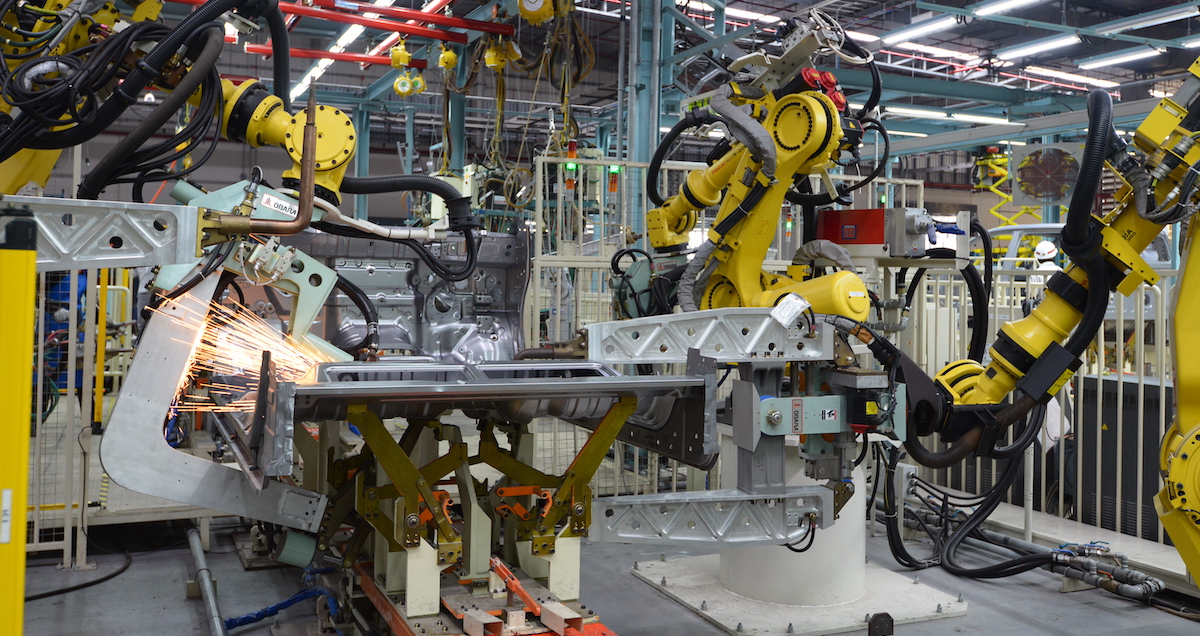The requirement of local content rate in the auto industry has been seen in a variety of forms throughout the history of auto development in various countries, but the objective is simple — to protect the growth and progress as well as employment opportunities of the domestic auto industry. The government in Taiwan had two bills to nurture the domestic auto industry over two decades ago: incentive programs for self-designed models and local content rate. The self-design incentive program encompassed three categories: powertrain, body/interior, and chassis system. Passing one of these categories contributed to a 3% reduction in the commodity tax of that model, and up to a 9% reduction for passing all the three categories. The local content rate was a mandatory requirement that vehicle assembly plants should use supply chains that had local roots. Without passing the minimum requirement of localization rate, the car model won’t be allowed to be localized and needs to change to an imported one by being imposed on then high tariff. The regulations were considered by the WTO to be in violation of the spirit of free-market competition, so they were phased out. Of course, the cessation of the local content rate regulation was principally because the sales volume of domestic vehicles was so low that it was difficult for parts suppliers to reasonably amortize the cost of parts development. On the other hand, isn't the auto industry in many countries, led by the U.S., asking for local production, local content rate, and even domestically -mined only raw materials for batteries? When the local auto industry is "on the verge of extinction", the lofty conviction of embracing the free-market economy vanishes in the blink of an eye. Then again, there may not be an unified answer to the question of whether the local content rate or the free market should take priority…
- The domestic market is small; the auto industry has limited strength.
Example: Taiwan. Taiwan's auto industry never really gained a foothold in the era of fuel vehicles. In the era of EVs, capitalizing on the existing foundation of semiconductor and ICT industries will create more opportunities. In such an environment, a free-market economy will not be very effective in boosting the auto industry, but the local content rate as a protective measure will not mean much, either. The priority should be to help domestic automakers expand the export market and the scale of the domestic auto industry. In all seriousness, using the local content rate as a protective measure was not a mistake back then, except that the government did not help the automakers obtain key technologies as the South Korean government did. As a result, they lost the first and most propitious opportunity, and the protection policy seemed ineffective.
- The domestic market is small; the auto industry has great strength.
Example: South Korea. Although South Korea's auto market is larger than Taiwan's, it is still small compared to the auto markets in many other countries. Nonetheless, Hyundai/Kia has reported rising sales volumes over the past few years and now ranks third, only behind Toyota and Volkswagen AG. South Korea has powerful EV products that must not be underestimated. Moreover, LG, Samsung, and SK have been planning and building large power battery factories around the globe. South Korean automakers moved away from the protection of local content rate regulation a long time ago and now have what it takes to support a free-market economy and venture into the global auto market at full throttle.
- The domestic market is big; the auto industry has limited strength.
Example: India. Despite the significant growth of automakers such as Maruti Suzuki in recent years, overall, the strength of India's auto industry is not among the leaders in the world. Judging from the domestic market worth an annual sales volume of 3 million units, India is the type of country that needs to protect its auto industry the most and should make every effort to develop new technologies for EVs. At present, many automakers (including Hon Hai) are taking proactive steps to set up EV assembly plants in India.
- The domestic market is big; the auto industry has great strength.
Example: China and the U.S. New technologies for EVs and autonomous driving have propelled China's auto industry to supremacy. China's mega domestic market dwarfs others worldwide. Not only are Chinese self-owned brands working on the export market fast and in depth, but they also started to pose a serious threat to the dominance of Japanese brands in many markets two years ago. Simply put, Chinese self-owned brands have transformed the decades-old business model of forced joint ventures with international brands to emulate them into an emerging force that challenges the global auto market. In fact, they do not need much protection anymore, but the business model of joint venture co‑branding cannot be withdrawn on a whim, so it is fair to say that Chinese automakers have all the advantages. The situation in the U.S. is exactly the opposite. The once invincible U.S. auto industry has been withering over the past decade or so, causing protectionism to clamor for extremely stringent requirements for the local content rate. The largest free auto market once seen in the U.S. is ancient history. Generally speaking, the two powers, China and the U.S., should open up their markets to free competition without any protection measures shielding local industries, but that is merely in theory, not in reality.

Having perused the above different market conditions, we can only point out the reality that governments will drum up a free-market economy and encourage competition as long as the development of local industries is not stymied, a prerequisite that denotes there is no level playing field for business anywhere in the world.